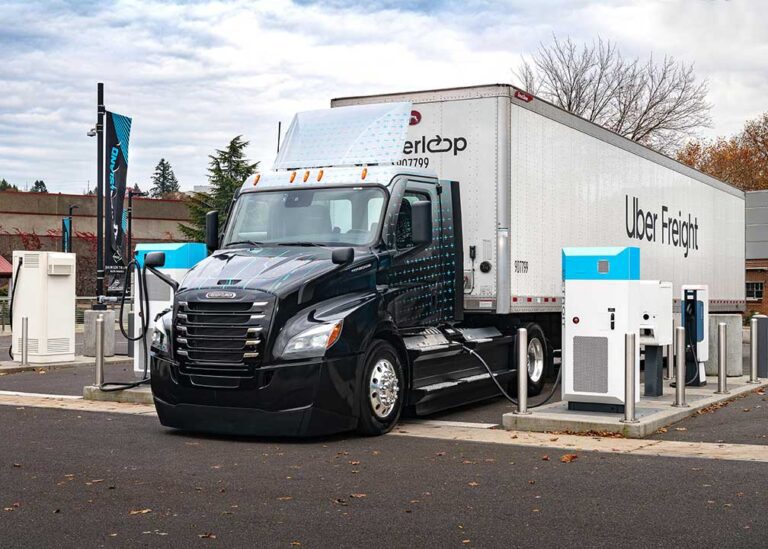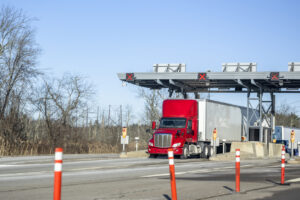Whether you like it or not — and there are many people in both camps — California is leading the way with proposed steps to reduce greenhouse gas (GHG) and other harmful emissions. Other states have adopted mandates from the California Air Resources Board (CARB) for their own use, or at least modeled their emissions reduction programs in a similar fashion.
The Biden administration has repeatedly pushed for the entire country to adopt CARB standards, with some success.
All the conflicting laws, proposals and statements, both in Washington and individual states, have resulted in general confusion and worry. Would-be truck buyers are understandably squeamish about purchasing equipment that may be barred from operating in certain jurisdictions. There’s also concern that government incentives to purchase zero emissions vehicles (ZEVs) might give buyers a competitive edge over users of equipment powered by internal combustion engines (ICE).
On the other hand, some who are considering the purchase of ZEVs are worried the technology — including availability of charging — isn’t yet viable for their operational needs. It’s not hard to buy ZEVs, but then there’s the question of finding certified technicians for maintenance. And what if roadside assistance is needed? And can carriers fit the limited range of ZEVs into their current freight mix?
Many truckers can still remember the debacle of 2007, when heavy-duty trucks were equipped with particulate filters to reduce NOx emissions. Stories of stranded trucks, with drivers trying to force a regen were common, as were astronomical bills to tow those trucks to a maintenance facility and repair or replace uncooperative parts.
In February, during the ACT Research Market Vitals conference in Columbus, Indiana, Lydia Vieth helped participants sort out what’s coming. Her presentation outlined both CARB and EPA changes that are currently active and those that are to follow. Vieth is a research analyst for electrification and autonomy at ACT.
“So many changes are coming that it’s difficult to keep track, and even the announced changes could change further,” she said.
So, what’s coming up for heavy-duty trucks?
To begin, CARB has mandated further NOx reductions in new trucks beginning with the 2024 model year. That’s right now. Several other states have adopted similar policies. Beginning Jan. 1, 2024, CARB-compliant vehicles must be equipped with a CARB clean-idle sticker to be allowed to idle while parked in the state. To qualify for the sticker, trucks must be equipped with engines specified by CARB’s rule. For example, buyers may need to choose a 13-liter engine rather than a 15-liter engine.
The Environmental Protection Agency (EPA) followed the CARB rule with reductions of its own, set to begin with the 2027 model year. In July 2023, CARB agreed to change its NOx requirements to match the lower EPA requirement by 2027. More importantly, CARB allowed manufacturers to use offsets to meet current emissions targets.
The EPA’s 2027 rules will require further reductions in NOx emissions. They’ll have another impact on the industry — the cost of new equipment will rise substantially. New engines may be equipped with such technology as cylinder deactivation, multi-stream dual aftertreatment systems involving two or more selective catalytic reduction converters (as opposed to the current single converter) and diesel exhaust fluid (DEF) heaters. Moreover, the EPA mandated that new components must be warranted for periods longer than many current truck warrantees last, up to 435,000 miles.
Because of the cost of new technology and warranties, the price of a new Class 8 truck is expected to rise by $20,000 to $30,000 in 2027. However, buyers won’t have to wait until 2027 to see higher prices. Carriers are expected to stock up on 2025 and 2026 models to beat the 2027 price increases. This pre-buying activity, along with the current inflation rate, will push prices higher for 2025-26 models.
In addition to new NOx rules, there are new GHG rules on the horizon. CARB’s Advanced Clean Trucks (ACT) and Advanced Clean Fleets (ACF) initiatives aggressively push for incorporation of ZEVs in California-registered trucks. By 2026, 10% of Class 7 and 8 trucks sold in California must be ZEVs — most likely battery-electric vehicles. That percentage doubles two years later and reaches 30% by 2030.
At this point, 11 states have adopted the CARB standards, and more are headed that way. Even though the installation of lines and transformers to handle the additional charging requirements of electric rigs is expected to take two years or longer in some jurisdictions, many politicians seem keen to force the adoption of ZEVs.
Starting this year, truck owners who work drayage operations at California ports won’t be able to upgrade their trucks with similar diesel-powered units. Instead, replacements that haul from ports must be ZEVs. By 2035, ALL drayage trucks must be ZEVs.
In April 2023, the EPA published a notice of proposed rulemaking to set national standards for ZEV adoption. This proposal separates the requirements for heavy-duty (Classes 7 and 8) trucks between vocational, day cab and sleeper cab trucks. By 2030, for example, 30% of vocational trucks must be ZEVs, while 20% of day cab and 10% of sleeper cab tractors must be ZEVs.
While the premise that different types of trucks, such as sleeper-equipped tractors, are more likely to be involved in long-haul operations and therefore more difficult to recharge, some industry experts believe vocational trucks may actually require more power. Dump trucks, for example, are typically loaded to maximum levels. Trash trucks require power to run compactors and are also heavy when loaded.
In any event, the proposed ZEV percentages haven’t been issued yet. The final rule is expected to be released later in March, but time is getting short.
With 2024 being a presidential election year, it remains to be seen if the post-election policy will be one of stricter or looser mandates for new heavy-duty trucks. Regardless of federal policy, California, along with other states that have adopted CARB standards, will undoubtedly continue to push for heavy-duty commercial ZEVs.
Cliff Abbott is an experienced commercial vehicle driver and owner-operator who still holds a CDL in his home state of Alabama. In nearly 40 years in trucking, he’s been an instructor and trainer and has managed safety and recruiting operations for several carriers. Having never lost his love of the road, Cliff has written a book and hundreds of songs and has been writing for The Trucker for more than a decade.














